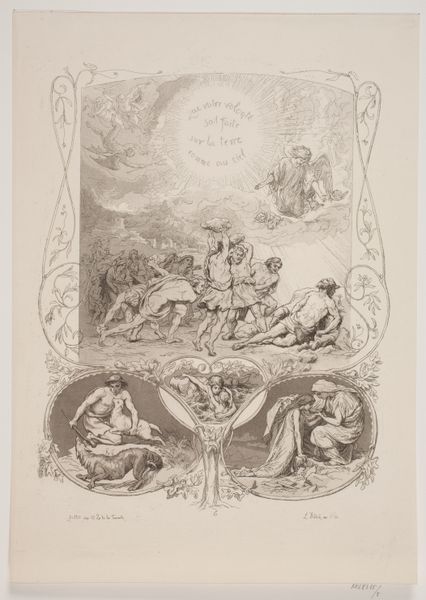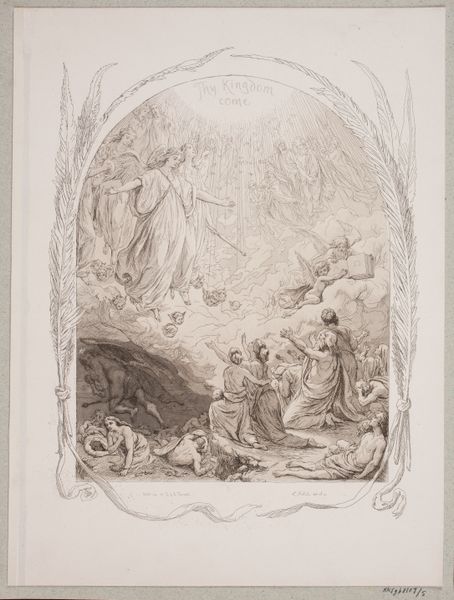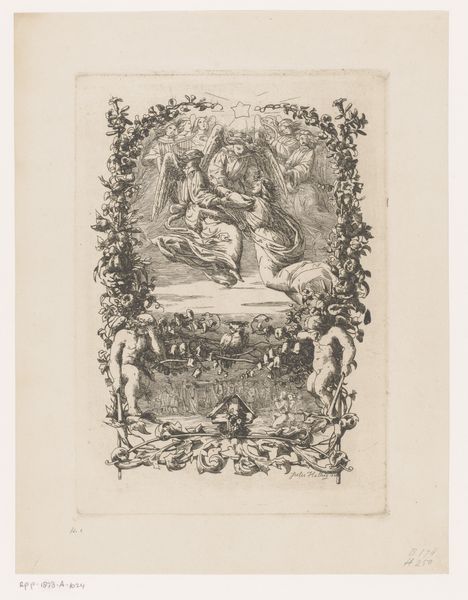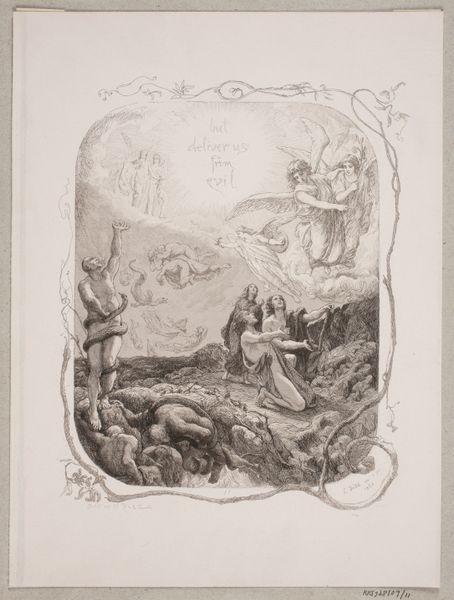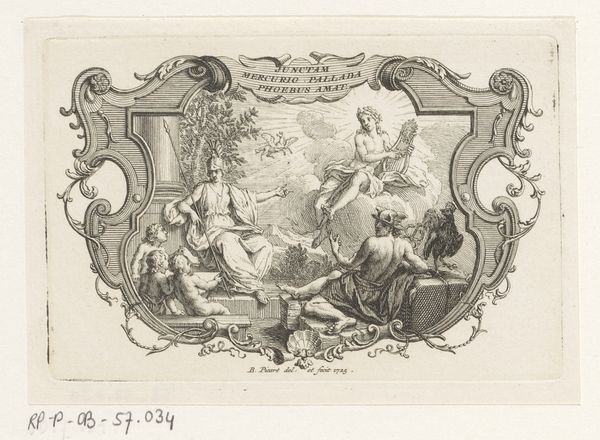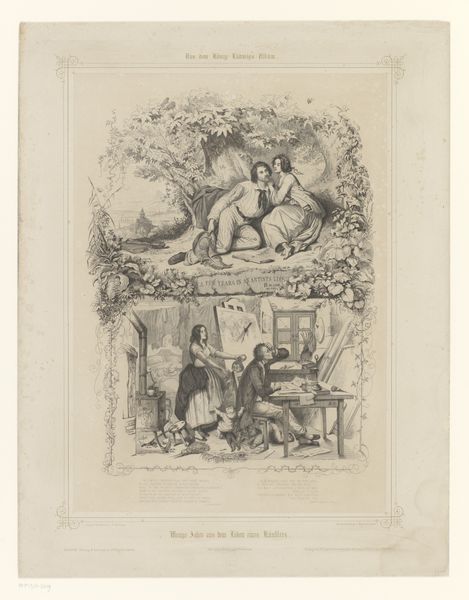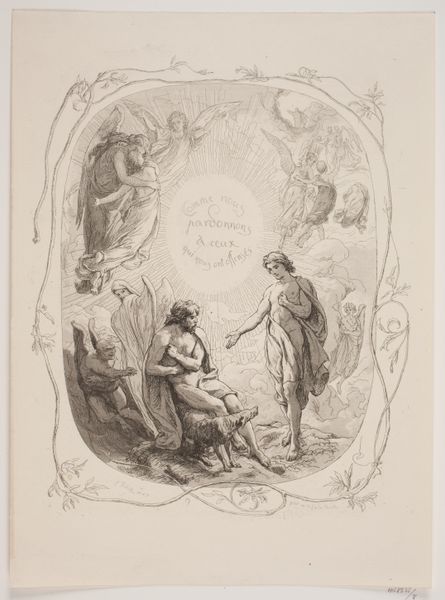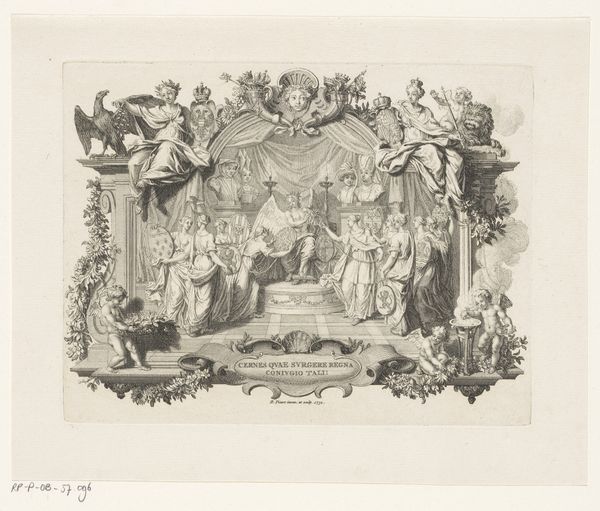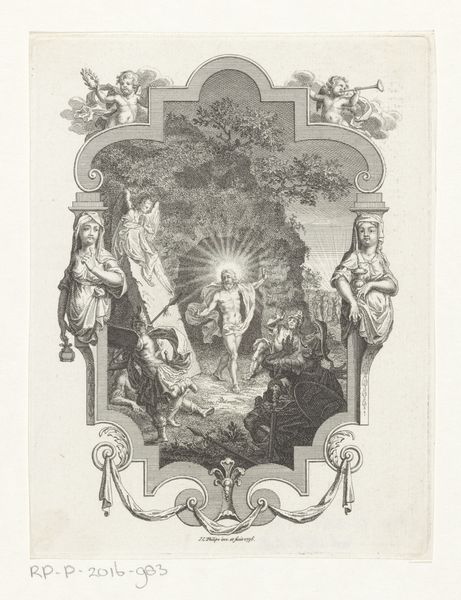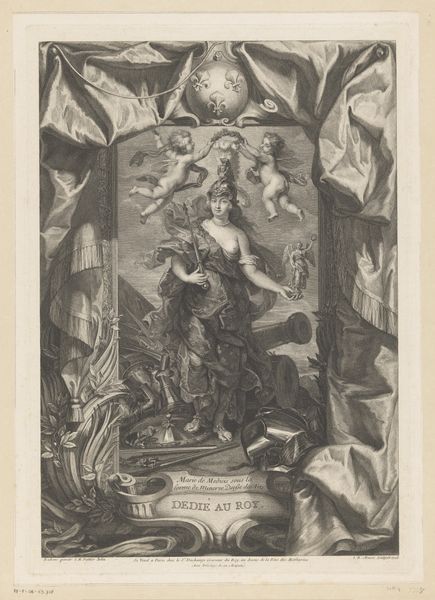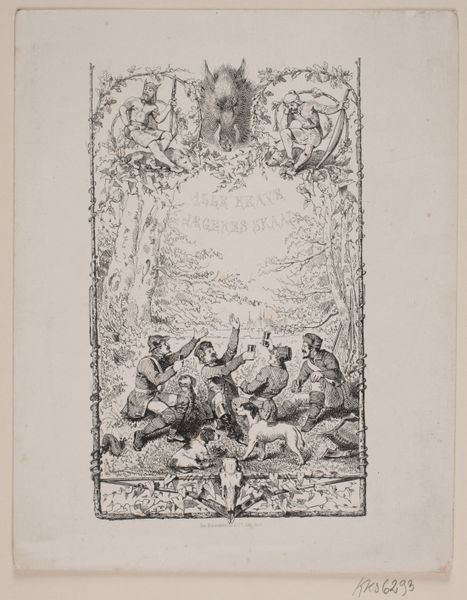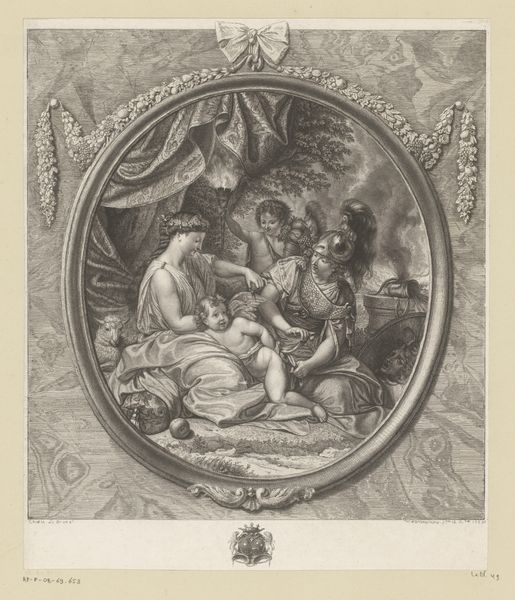
print, pencil, engraving
# print
#
pencil sketch
#
figuration
#
pencil
#
history-painting
#
engraving
Dimensions: 307 mm (height) x 229 mm (width) (bladmaal)
Curator: Editor: So this engraving, "Illustration til 'The Lord's Prayer'" by Lorenz Frølich, created in 1863... I'm immediately struck by the composition. It’s compartmentalized yet interconnected, and rendered in such fine detail. What do you see in it? Curator: Formally, the engraving presents a fascinating interplay between distinct pictorial registers. Note how the composition is divided horizontally into a celestial upper section, a tumultuous middle ground, and a serene lower register, each delineated by decorative borders. The eye is drawn to the gradations in value, the contrasts in texture that the artist was able to achieve with engraving. The strategic deployment of light is crucial in directing visual attention and imparting depth. Editor: It's true, the contrasting values guide my eye through different sections. But what about the overall narrative, the thematic intention? Curator: The narrative unfolds within a structured visual field. The upper section, dominated by the text "Thy will be done on earth as it is in heaven," employs radiating light to evoke a sense of divinity and order. Descending to the earthly plane, the middle ground depicts conflict and human suffering, rendered with dynamic lines and figures in contorted poses. Finally, the lower register features vignettes framed within circular motifs that depict peace, supplication, and piety. Can you appreciate how the work compels viewers to mediate between divine will and human action through its intricate visual vocabulary? Editor: I can see the tension, certainly. The engraving technique itself—the delicate lines, the shading—also emphasizes that contrast between the chaotic and the serene, heaven and earth. It feels almost theatrical. Curator: Precisely. The artist masterfully uses the medium to create not just images but dramatic contrasts, reinforcing the thematic dichotomy. Notice that it is more than a visual representation; it becomes an exercise in contrasting values and textures. Editor: This has completely changed how I view this piece. I now see the arrangement of pictorial registers, light and shadow, not as mere depiction, but as a potent narrative tool! Curator: Indeed, appreciating how an artist uses form to convey content deepens our understanding and appreciation of their craft and insight.
Comments
No comments
Be the first to comment and join the conversation on the ultimate creative platform.
